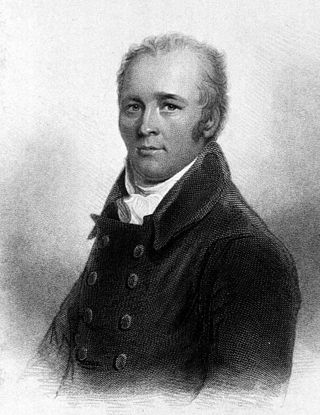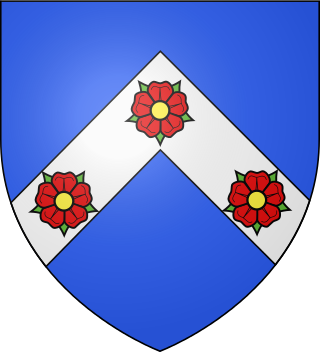
Earl of Glencairn was a title in the Peerage of Scotland. It was created in 1488 for Alexander Cunningham, 1st Lord Kilmaurs. The name was taken from the parish of Glencairn in Dumfriesshire so named for the Cairn Waters which run through it.

Clan Nicolson is a Lowland Scottish clan. The clan claims descent from an Edinburgh lawyer who lived in the 16th century and from a distinguished line of Aberdeen merchants who preceded him. During the mid-1980s David Nicolson, 4th Baron Carnock was recognised by the Lord Lyon King of Arms as the chief of Clan Nicolson. Around the same time, a Nicolson who claimed descent from the Highland clan of "Nicolsons" historically centred on Skye, petitioned the Lord Lyon King of Arms to be recognised as chief of his own clan. The Lord Lyon King of Arms accepted this man's petition on the condition he took the surname MacNeacail. In consequence there are two Scottish clans with similar names—the lowland Clan Nicolson and the highland Clan MacNeacail.

James Currie FRS was a Scottish physician, best known for his anthology and biography of Robert Burns and his medical reports on the use of water in the treatment of fever. A watercolour portrait by Horace Hone (1756–1825) is in the National Galleries of Scotland.

Clan Buchanan is a Highlands Scottish Clan whose origins are said to lie in the 1225 grant of lands on the eastern shore of Loch Lomond to clergyman Sir Absalon of Buchanan by the Earl of Lennox.
Curry is a common surname used in Ireland, Scotland and England. Currey is a less common variant. In England and Scotland, the is thought to derive from local place names and, in Scotland, also possibly from MacMhuirrich.

Clan Johnstone is a Border Reiver Scottish clan.

Clan Moffat is a Lowland Scottish clan of ancient origin. The clan was leaderless and obscure from the mid 16th century until 1983, when Francis Moffat of that Ilk was recognised as the hereditary chief of the clan by Lord Lyon King of Arms.

Clan Jardine is a Scottish clan of the Scottish Lowlands.

Clan Marjoribanks is a Scottish clan of the Scottish Lowlands.

The Johnstone, later Pulteney, later Johnstone Baronetcy, of Westerhall in the County of Dumfries, is a title in the Baronetage of Nova Scotia. It was created on 25 April 1700 for John Johnstone, one of the Scottish representatives to the 1st Parliament of Great Britain, with remainder to his heirs male. He was eighth in descent from Matthew Johnstone, who is said to have been a younger son of Sir Adam Johnstone, ancestor of the Earls and Marquesses of Annandale. The second Baronet sat as a Member of Parliament for Dumfries and Dumfriesshire. The third Baronet represented Dumfries, while the fourth Baronet sat as Member of Parliament for Dumfries and Weymouth. The fifth Baronet, Sir William, was Member of Parliament for Cromarty and Shrewsbury. He married Frances, daughter of Daniel Pulteney and niece and heiress of William Pulteney, 1st Earl of Bath, through which marriage vast estates came into the family. On his marriage Sir William assumed the surname of Pulteney in lieu of Johnstone. His only child, Laura, inherited the Pulteney estates and was created Countess of Bath in 1803. The sixth, seventh and eighth Baronets all represented Weymouth in Parliament. The sixth Baronet twice declined a peerage offered to him by Spencer Perceval.
Sir Walter fitz Gilbert of Cadzow, 1st Laird (Lord) of Cadzow was a Scottish nobleman. The son of Gilbert fitz William of Hameldone, and husband to Mary Gordon of Huntly. The marriage date is 1308 in Cadzcow, Lanarkshire, Scotland. He is the first historically confirmed progenitor of the House of Hamilton, which includes the Dukes of Hamilton, Dukes of Abercorn and Earls of Haddington.
The Battle of Arkinholm was fought on 1 May 1455, at Arkinholm near Langholm in Scotland, during the reign of King James II of Scotland. Although a small action, involving only a few hundred troops, it was the decisive battle in a civil war between the king and the Black Douglases, the most powerful aristocratic family in the country. As the king's supporters won it was a significant step in the struggle to establish a relatively strong centralised monarchy in Scotland during the Late Middle Ages.

Clan Blackadder is a Scottish clan. The clan historically held lands near the Anglo-Scottish border.
Corrie is a unisex surname in the English language. The name has several different etymological origins. The name is found in numbers in the north of Ireland. The surname has been borne by a noted Scottish family, that was originally seated in what is today the civil parish of Hutton and Corrie.

Clan Pringle is a Lowland clan from the Scottish Borders.

Sir John Stewart, the brother of Sir James the 5th High Steward of Scotland, was a Scottish knight and military commander during the First Scottish War of Independence.
Sir William Johnstone, 2nd Baronet of Sciennes and Westerhall was a Scottish landowner and politician who sat in the Parliament of Scotland from 1698 to 1707 and in the British House of Commons between 1707 and 1722.
Patrick Andrew Wentworth Hope-Johnstone, 11th Earl of Annandale and Hartfell, is a Scottish peer. He succeeded his father as chief of Clan Johnstone in 1983, and his claim to an earldom was recognized three years later. A member of Lloyd's of London from 1976 until 2004, he has been involved in local government and charitable endeavors in Dumfries.

Clan Ralston is a Scottish clan. The clan is recognized as such by the Court of the Lord Lyon, but as it does not currently have a chief recognized by the Lord Lyon King of Arms it is considered an Armigerous clan.

The site of the old Newbie Castle, Newbay Castle or Newby Castle was the caput of the Barony of Newbie near Annan close to the River Annan's confluence with the Solway Firth in Dumfries and Galloway, Scotland. Held by the Corries and then the Johnstones. Newbie Harbour on the River Annan was located nearby.














